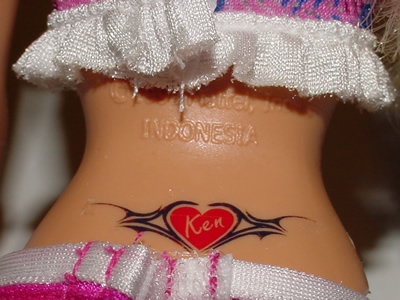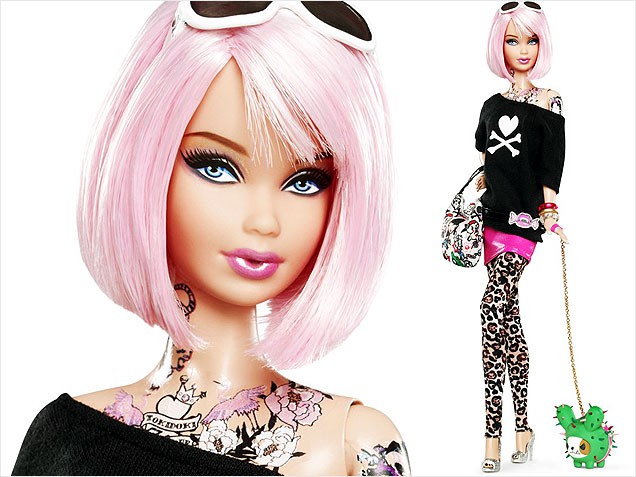 One object that immediately came to mind that defined gender and sexuality for me as a child was Barbie. Every girl grows up playing with Barbies and every boy had their toy cars or trucks. For us girls, we were introduced to gender, sexuality, relationships, and homely aspects from playing “house” with our wide variety of Barbie dolls and accessories.
One object that immediately came to mind that defined gender and sexuality for me as a child was Barbie. Every girl grows up playing with Barbies and every boy had their toy cars or trucks. For us girls, we were introduced to gender, sexuality, relationships, and homely aspects from playing “house” with our wide variety of Barbie dolls and accessories. When I was a young girl it seemed as if I had every Barbie doll and every accessory known to man. For example, I had the Barbie mansion, the convertible, the Ken dolls, the little baby Barbies and much more. As a child, before all of the “working girl” Barbies hit the market, I assumed Barbie stayed home with the kids and made dinner while Ken went to work. That was how Barbie was portrayed in the commercials, on the boxes, and in media at the time. I always had Barbie cooking in the kitchen, taking care of the children, and tending to the house while Ken was out at work. In my Barbie mansion, there was always a family too. Ken was the dad, Barbie was the mom, and they had a child. At this age I vaguely knew about se
 x, but I knew enough to know Ken and Barbie made that child and that they were sexual beings. This was probably the first time I learned about sexuality.
x, but I knew enough to know Ken and Barbie made that child and that they were sexual beings. This was probably the first time I learned about sexuality. The way the manufacturers created Barbie and Ken physically also contributed to the gender stereotypes and sexual appeal. Barbie was made with a tiny waist, long legs, long blonde hair, big boobs, dresses, hig h heels, and permanently painted makeup on her face. Ken was created with sculpted muscles, thick arms and legs, perfect hair, wide chin, bigger hands and feet, and a manly face. Considering this is how all of Barbie’s and Ken’s friends were created too, I thought this is what all people were supposed to look like in real life.
Another major thing that happened to me as a child with Barbie was experiencing sexuality. Barbie is clearly a sexual being, with the way she is sculpted and the way she is dressed. To me, I thought it was normal for people to wear those skimpy, glittery ensembles that were held together by only a few stitches. Barbie dolls never seemed to have full, normal clothing; it was either a small dress with heels or a bathing suit. My Barbie’s wardrobe was endless, but it occurred to me that that clothing would be considered inappropriate in daily life and that she was clearly meant to be a sexual character. Not only was my Barbie always dressed femininely, Ken also always came with a suit, dress clothes, or some type of sports outfit. These clothes both defined gender and sexuality for me at an early age.
Playing with Barbie dolls for the majority of my childhood definitely made an impact on my life when it came to gender and sexuality. I was introduced to these stereotypes at an early age, and as more various dolls came out, the more I learned about sexuality as well. There are some very risqué dolls such as a go-go dancer, tattooed and pierced Barbie, beach model, and even the almost-naked Britney Spears Barbie. 



I can see how Barbies sexuality could influence little girls. From a very young age girls use Barbie, "the perfect woman", as a model to aspire too. I can totally relate with all of your Barbie memories, I had two sisters growing up. I was the middle child so there was always a lot more girl dolls and girly toys around me, especially all the Barbies. Luckily, my Pokemon cards captivated most of my attention.
ReplyDeleteBarbie is a great example! I can see how they could influence young children. It's weird to think how disproportional a Barbie would be as a real person. And it surprises me even more that no one has spoke up against Barbies. It may sound strange, but it could negatively influence kids more than video games or drugs, things parents seem to be more passionate about.
ReplyDeleteP.S. The Brittany Spears doll looks kinda creepy